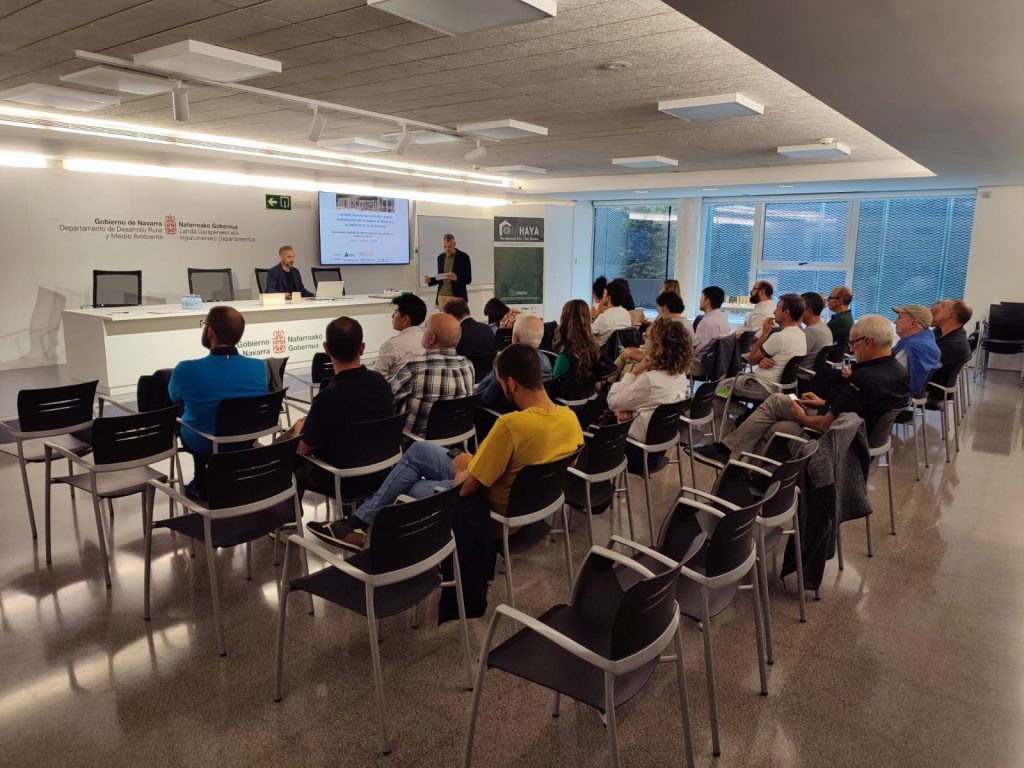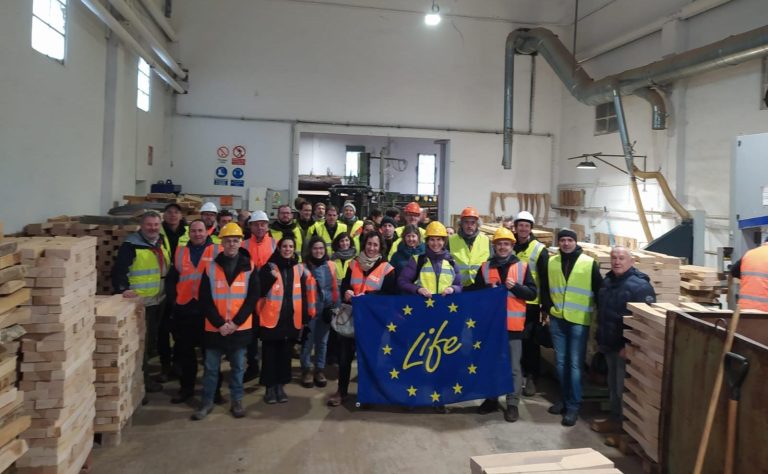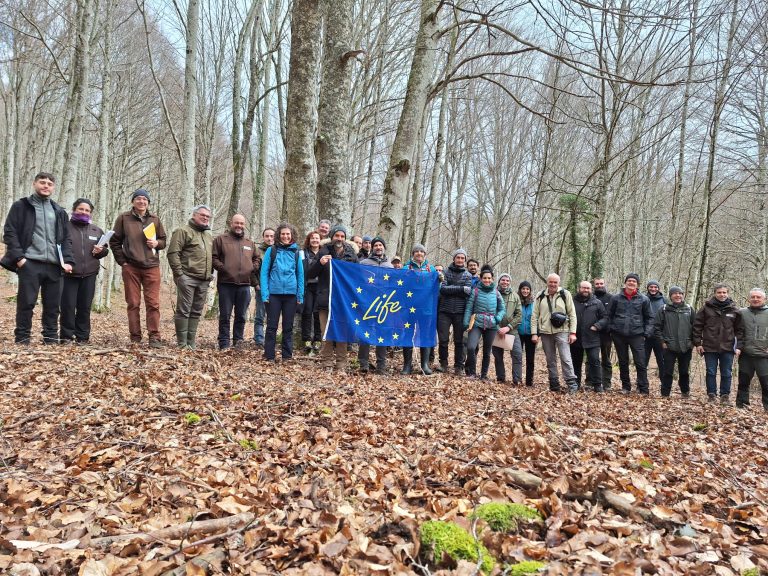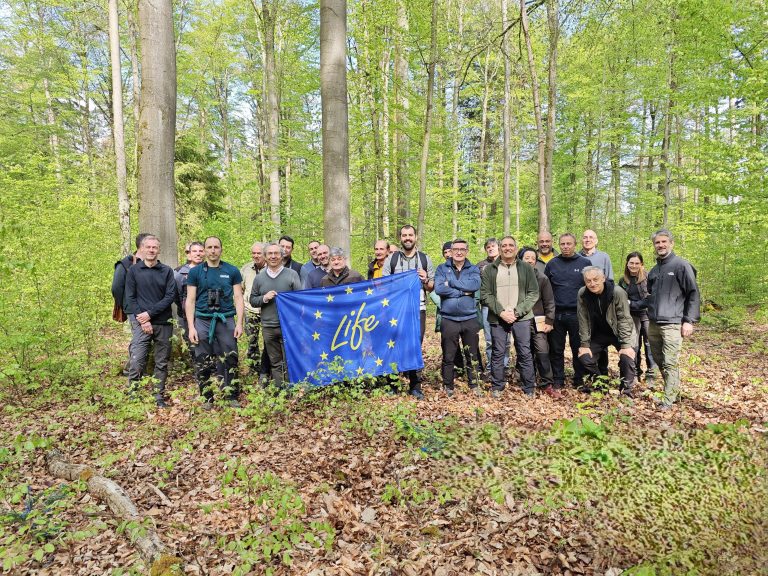The 4th Committee of Experts of the LIFE HAYA Project took place in Pamplona on 19 September, with the aim of connecting with the main actors of the wood value chain and especially with the industry.
It was a day of knowledge transfer and debate, under the title ‘New tools for the incorporation of Navarrese wood and its industry in construction’, which brought together around twenty representatives from organisations, administrations, the world of architecture and project partners.
Wood construction is a market that has been growing steadily over the last 10 years and is expected to continue to grow exponentially over the next decade. This situation creates an opportunity for the wood processing industry in Navarre.
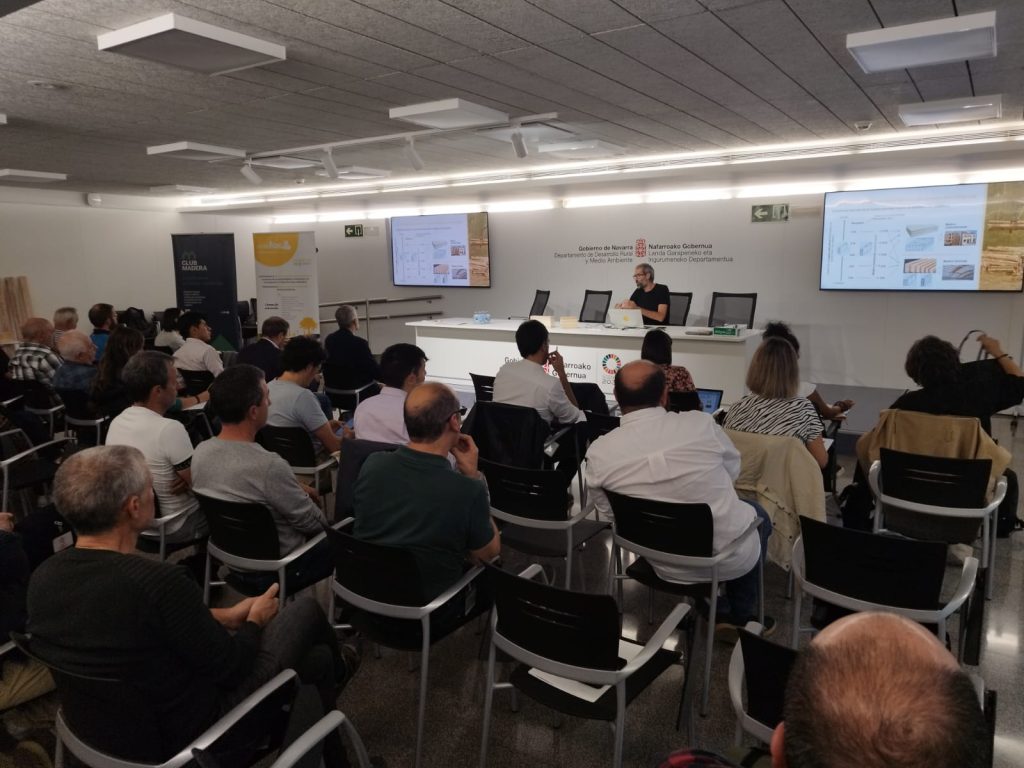
This conference showed the technology developed for the insertion of the Navarra wood industry in the construction sector, and the different opportunities that this technology provides to generate new products and services along its value chain.
Several points could be concluded:
- The new Building Regulations have a strong focus on sustainability, efficiency and circular economy; this will have a major impact on the timber value chain.
- According to several studies, global sawn timber production is expected to grow slightly, with most of its output going into the manufacture of technological products for timber construction (CLT, MLE). In proportion, demand for technological products is expected to increase sharply.
- A greater presence of technological wood products will lead to higher added value, which will also multiply the value of the raw material.
- The expansion of timber construction would have a tractor function on other wood products: carpentry elements, furniture, insulation, etc.
- Navarre is the region in Spain with the highest volume of felling, a long tradition and a large industrial fabric around the beech forest. In fact, beech is by far the species that generates the greatest volume of wood in this Autonomous Community. However, a large part of it is still destined for firewood (50%), so there is great potential for revaluation.
- In terms of forestry and harvesting, it is considered that more forest management will be needed to meet future demand.
- Implementing CE marking in the wood sawing industry is key to being able to declare resistant classes of wood and use them both as structural sawn timber and to supply the secondary processing industry for the manufacture of MLE or CLT, among other products for structural use in construction. It is, therefore, a guarantee of quality, opens up markets, represents a competitive differentiation, improves the professionalisation of the sector and gives confidence and security to the customer.
- Mechanical grading, although it requires a certain initial investment (variable depending on the equipment), is the grading system that is gaining ground in Europe due, among other things, to the high yields in structural timber it offers.
- The future of timber construction is industrialisation: the greater the control of manufacturing, the shorter the time and the greater the supply of labour (with better working conditions).
- For all these reasons, training in industrialised timber construction acts as a lever for the entire value chain.
- And finally, we believe that there is a great potential for the valorisation of an important part of beech wood for structural uses (mechanical grading has shown that there are high yields and high strength classes).
